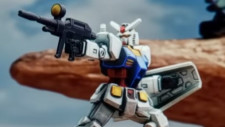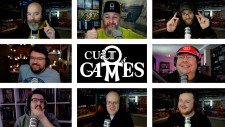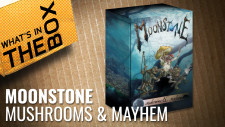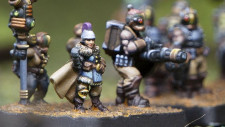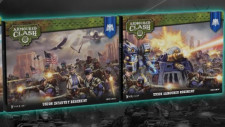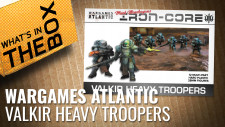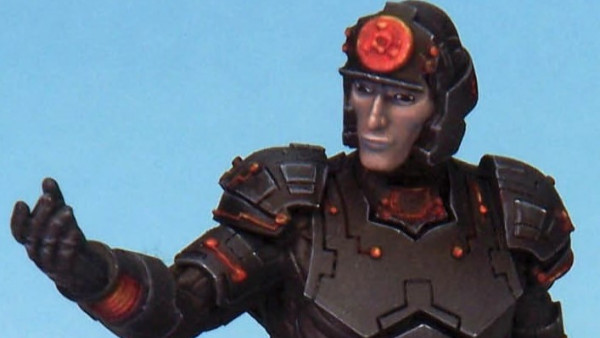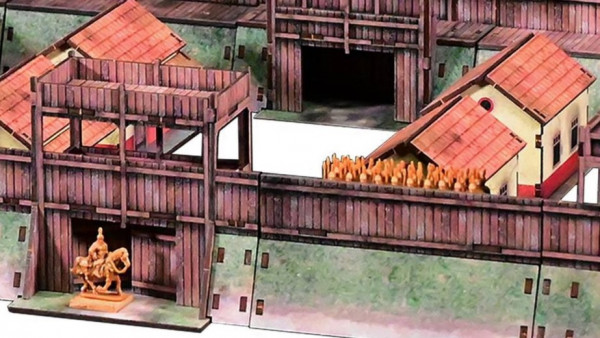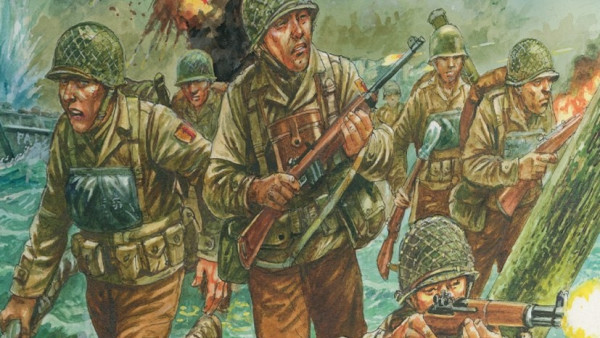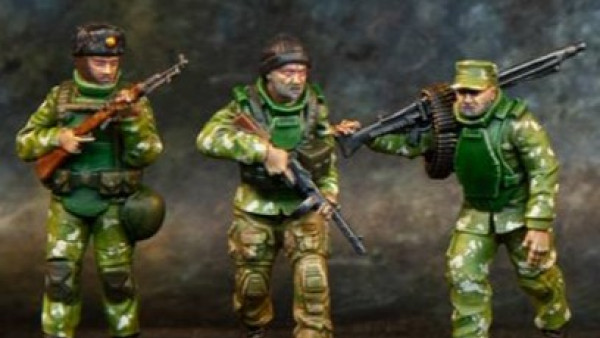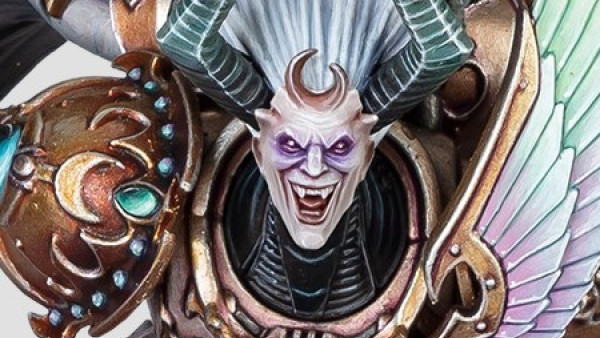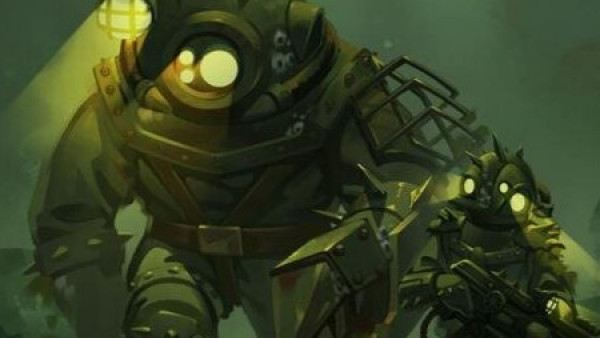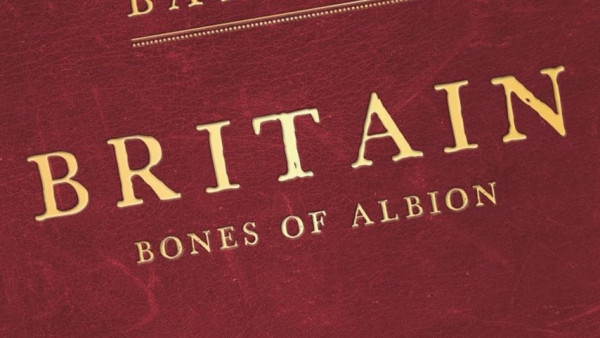Home › Forums › Historical Tabletop Game Discussions › Poland 1939 – Preparing for 80th Anniversary of World War II
Tagged: historical, Oriskany, Poland, World War II, Yavasa
This topic contains 121 replies, has 12 voices, and was last updated by jamesevans140 5 years, 3 months ago.
-
AuthorPosts
-
August 14, 2019 at 4:53 am #1426048

A while ago, my friend @yavasa and I resolved to undertake a project we felt was pretty special. We wanted to “sound the starter gun” on the 80th Anniversary of World War II, with some commemorative publications and wargames centered on the official opening of the conflict, Germany’s invasion of Poland in 1939.September 1, 2019 marks the 80th anniversary of that fateful morning.
Over the next few weeks we’ll be putting up a series of write ups, battle reports, wargames, documents, maps, and photos to put a spotlight on this often overlooked and misunderstood opening chapter of the Second World War.
We wanted to do this as a forum thread instead of a project or an article series so we could invite participation from the community as well. Where have you done Poland on the table top, game board, or even computer screen? What documentaries, books, magazine articles, or wargames have you found insightful on the topic? What stories have you heard, what questions do you have?
@yavasa and I hope you’ll find this forum topic interesting, or even better, we hope you’ll add some posts or materials of your own!
August 14, 2019 at 5:06 am #1426049
So let’s start with the big picture, with a background piece by @yavasa :
This year marks the 80th anniversary of the outbreak of the Second World War. On September 1, 1939 German forces invaded Poland thus beginning the conflict that would run for the next six years. However, before we jump into the battles of the so-called September Campaign it is a good idea to give some background to the war which would cost millions of lives and in the end divide the world with the Iron Curtain for four and a half decades.
In order to find the roots of the conflict in question we need to go back as far as the Treaty of Versailles signed in 1919. The new borders in the middle-eastern Europe was disputed by Germany throughout the years. For the needs of this short introduction to the origins of the war I will solely focus on the problems Germany had with Poland during the 20 years between the first and second world wars.
First of all, German foreign policy concentrated on the revision of the Treaty of Versailles. Germany wanted to protect it’s citizens abroad and a place like the Free City of Danzig was one of the bones of contention. Germany also contested the border with Czechoslovakia and the fact it was forbidden to formally union with Austria. When the NSDAP and Hitler came to power in 1933 the drive to mock and eventually breach the arrangements of the Treaty of Versailles became even more apparent.
Germany after 1933 started to rebuild its military power despite the fact it was formally forbidden to do so. In 1936 remilitarization of the Rhineland took place with no reaction from France and England. This was an open breach of the Treaty of Versailles and the Locarno Treaties. Two years later, in March 1938 Anschluss (union between Austria and Germany) became a reality. The same year the Munich Conference gave Germany parts of Czechoslovakia. One must mention that despite the fact that is was Czechoslovakian territory that was being divided by France, England, Germany and Italy there were no representatives of the Czechoslovakian government present during the talks.
All these moves were slowly making the situation difficult for the Poles. With Czechoslovakia weakened Germany turned it’s eyes on Poland. In October 1939 Joachim von Ribbentrop (the Third Reich’s Minister of Foreign Affairs) offered to the Polish ambassador to Germany the following:
- – The Free City of Danzig will became a part of Germany
- – an extraterritorial motorway and railroad will connect the main German territory and Prussia
- – Poland will join the Anti-Comintern Pact.
Poland did not agree to these terms but till the end offered to negotiate the status of the Free City of Danzig. Nevertheless Adolf Hitler was not interested in talks. In the beginning of 1939 Czechoslovakia lost its integrity when Slovakia declared independence and when the Germans occupied what was left of the country after the Munich Treaty of 1939. The Protectorate of Bohemia and Moravia was established on 16 of March 1939.
Polish defense lines just got longer. In strategic terms, her borders were now threatened on three sides, from Germany’s main territories to the west, East Prussia to the north, and the former territories of Czechoslovakia to the south. On the other hand German actions opened the eyes of the western democracies which slowly began to not trust Hitler.
German strategy focused on cutting of Poland from and aid from its neighbors and allies. On a side note it must be mentioned that despite German attempts Hungary did refuse Germany to use its territory as a base for operations against Poland.
On March 31st Great Britain guaranteed independence to Poland and later to Romania and Greece. In April Hitler ordered his generals to prepare the plan of invasion of Poland code-named Fall Weiss (Case White). Poland was also slowly preparing a plan of defense against a German invasion. In May Poland signed an annex to the treaty of 1921 signed with France according to which France would help Poland militarily in Germany attacked Poland.
Meanwhile, Germany and the Soviet Union were secretly negotiating an alliance in the war to come. In August both of the countries came to agreement and signed the Ribbentrop-Molotov Pact which actually divided the Polish territory between the two countries as a result of the military operations to come. With Stalin on his side Hitler ordered his forces to invade Poland on the 26th of August but postponed the decision on the 25th when he got informed that Poland and Great Britain became allies and Mussolini refused to wage war by his side.
However, his final decision came on the 31st of August that Poland was to be invaded in the 1st of September.
August 14, 2019 at 5:17 am #1426050
On the gaming table, I’m looking at Poland Defiant by Stephan Ekstrŏm and Revolution Games. The game recreates, on the operational level, the first ten days of the whole German invasion of Poland. German, Slovak, and Polish units are represented, with each counter in the game usually representing a division (approximately 10000-15000 men).
While the Polish player can probably not halt the German invasion outright, slowing or bloodying the German invasion to a sufficient degree can constitute a victory. Historically this might have caused greater reaction from the British and especially the French, or upset the timetable of coordination the Germans had with the Soviets who would invade Poland from the east on 17 September.

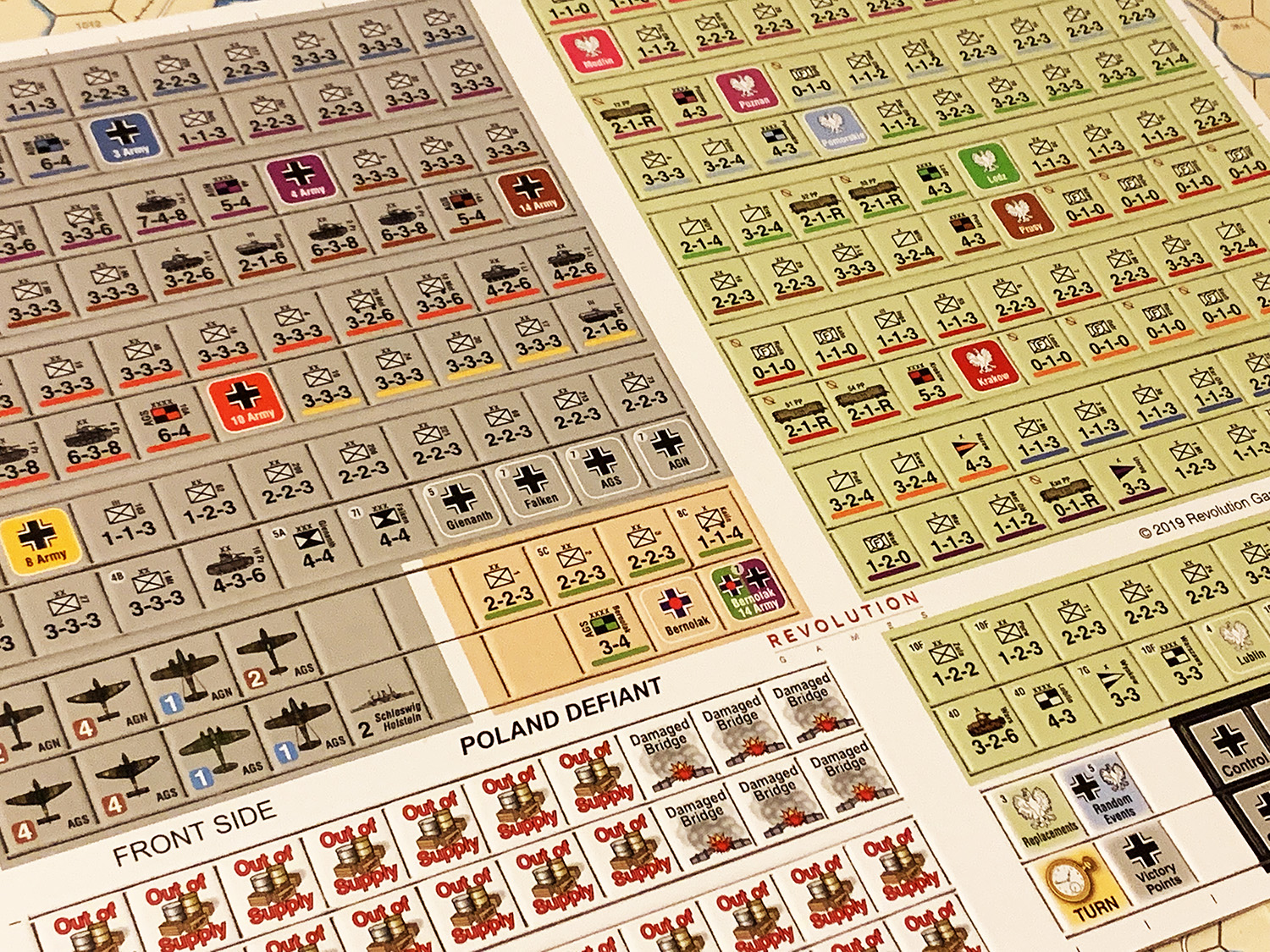
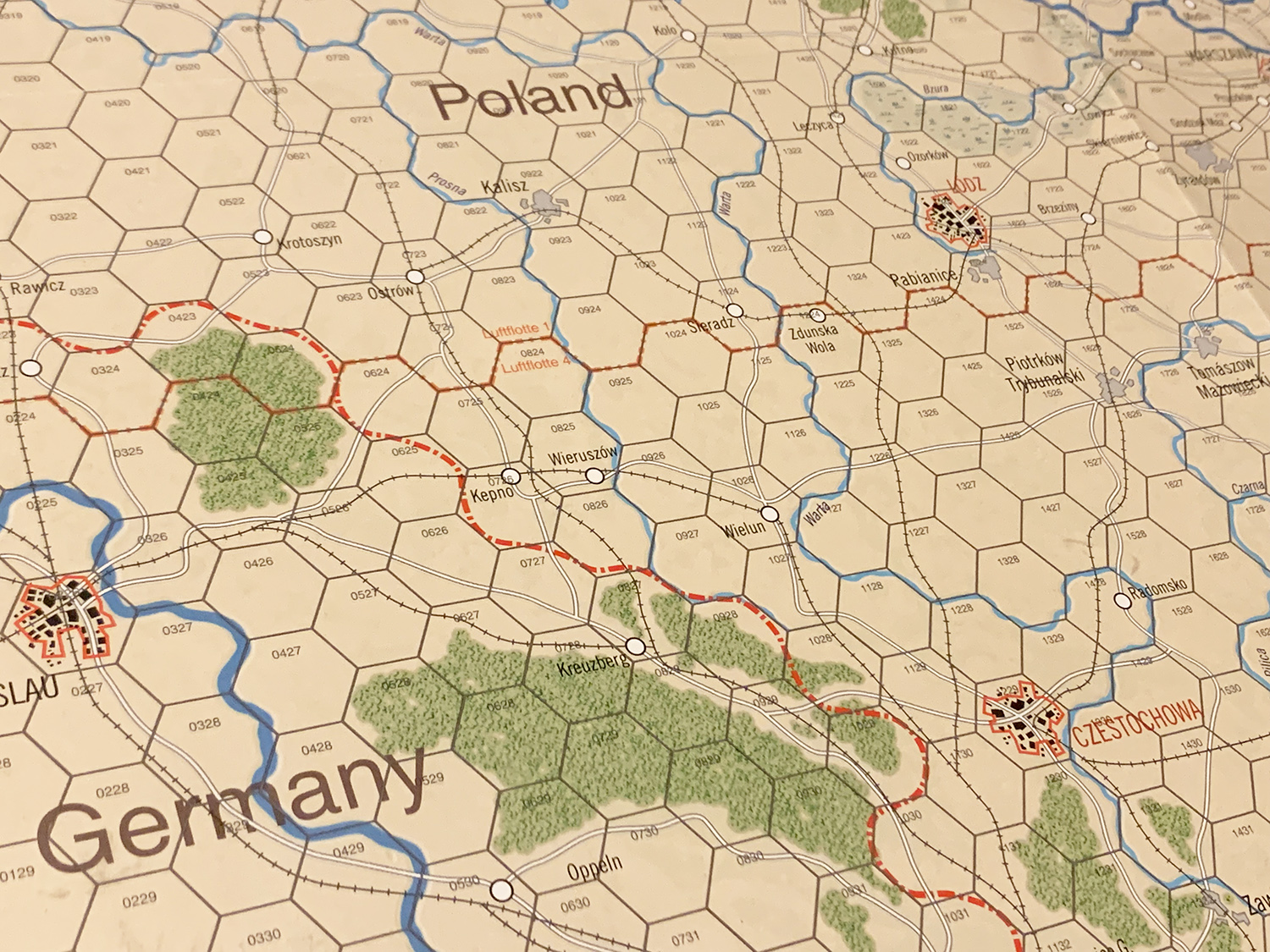 August 14, 2019 at 5:50 am #1426056
August 14, 2019 at 5:50 am #1426056
Zooming in to the command-tactical level, @yavasa and I have already live-streamed some Poland Panzer Leader on the Sitrep Twitch Channel.
This was basically a playtest of the new counters and armies, but did try to take a very summery try at recreating part of the Battle of Borowa Góra. A quick note, the map is rotated for better viewing on a landscape format, “north” is to the right. German inits include the lead echelon of 1st Panzer Division, Polish units include 146th Regiment / 44th Reserve Division and 1st Light Tank Battalion.
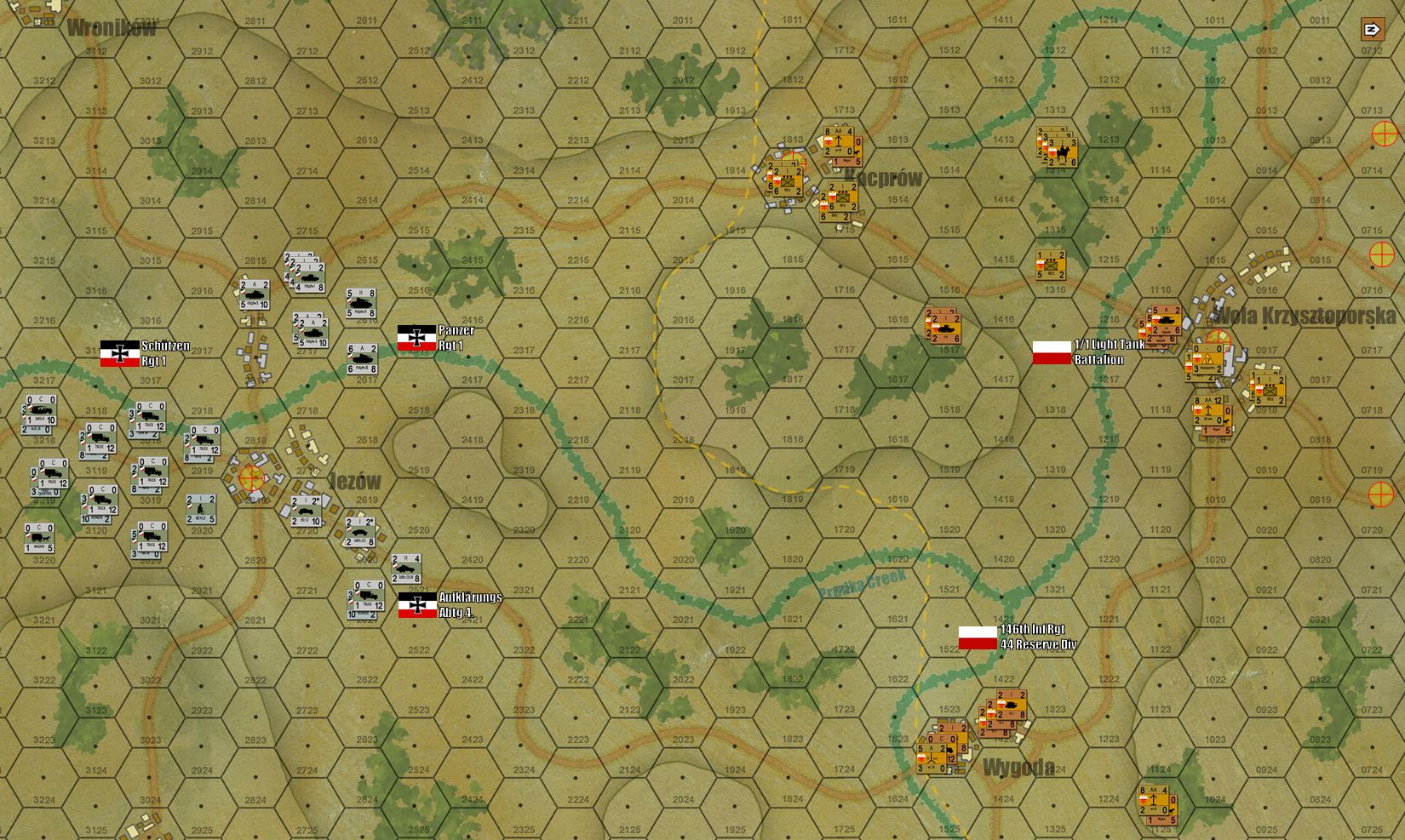
.
Ah, the “mighty” German Panzerwaffe of 1939. We’re looking at about 40 tanks here, roughly one battalion, or about 1/8 of 1st Panzer Division’s armored fighting power.
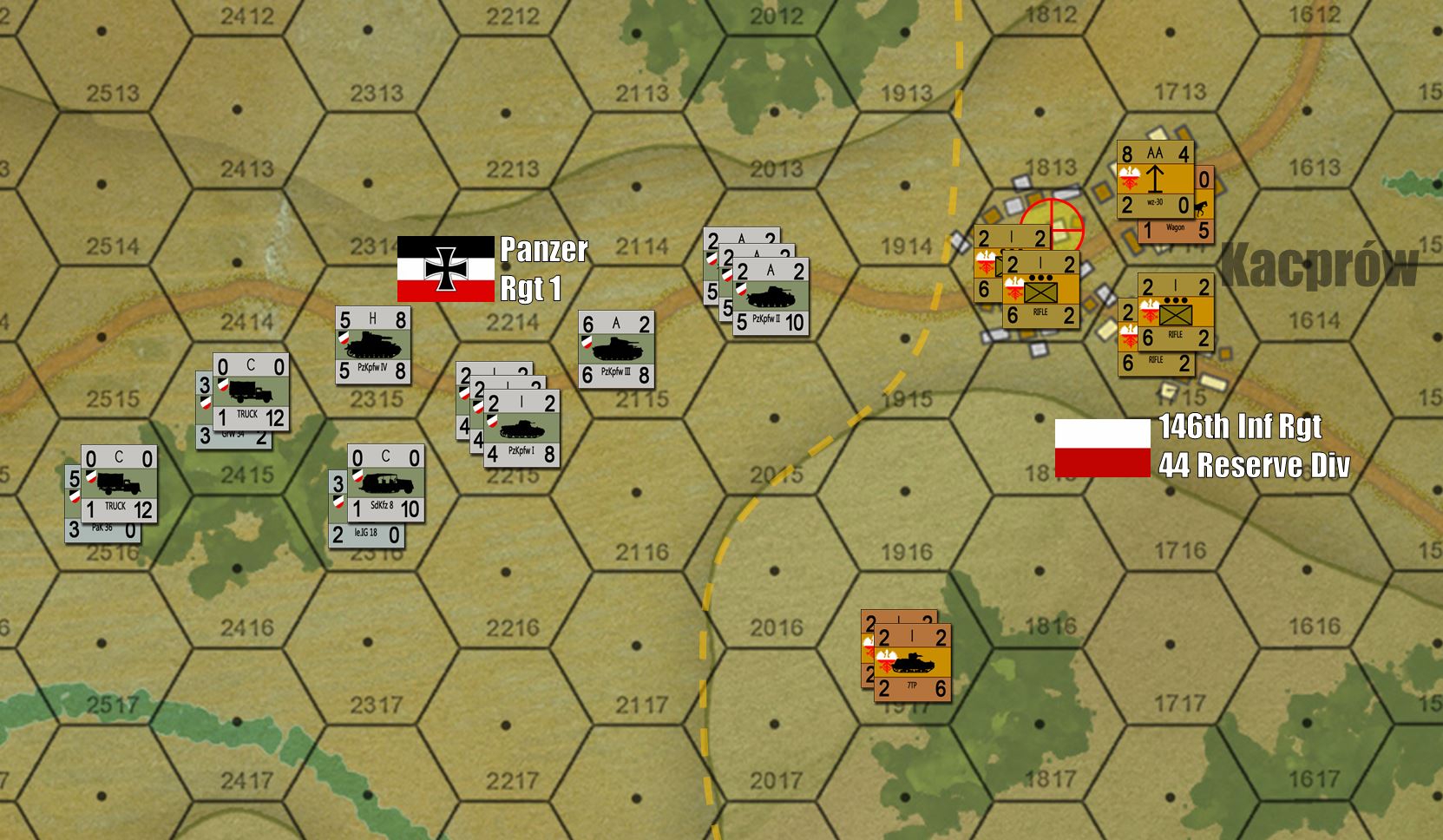
.
Yavasa gets bold, wiping out a platoon of “Pioniere” assault engineers while they were still in my trucks. The nearby platoon of SdKfz 231/6s tried to break up this tankette attack, but failed.
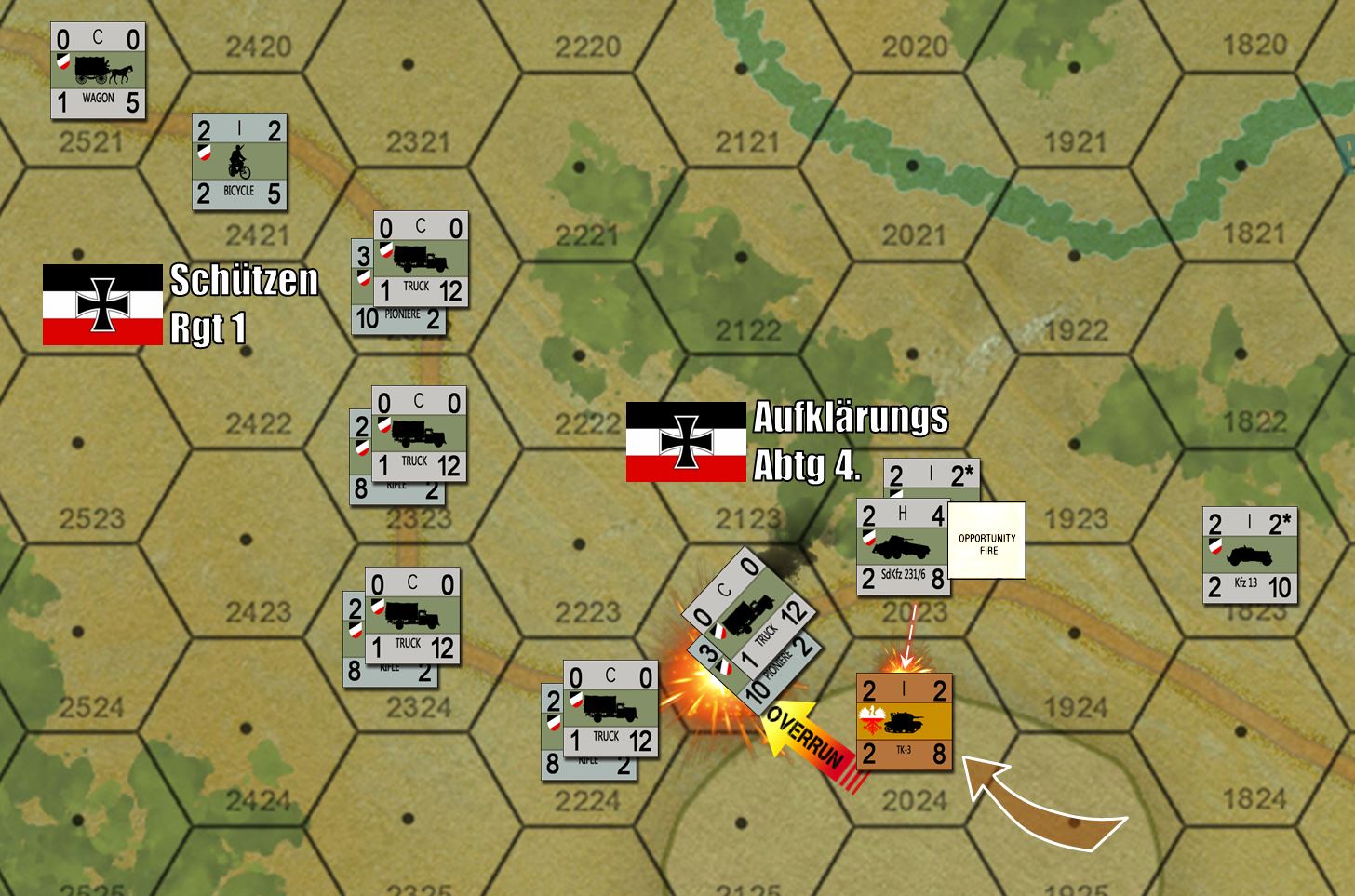
.
The Germans invest Polish tanks, and set up for their set-piece assault on the second Polish objective hex.
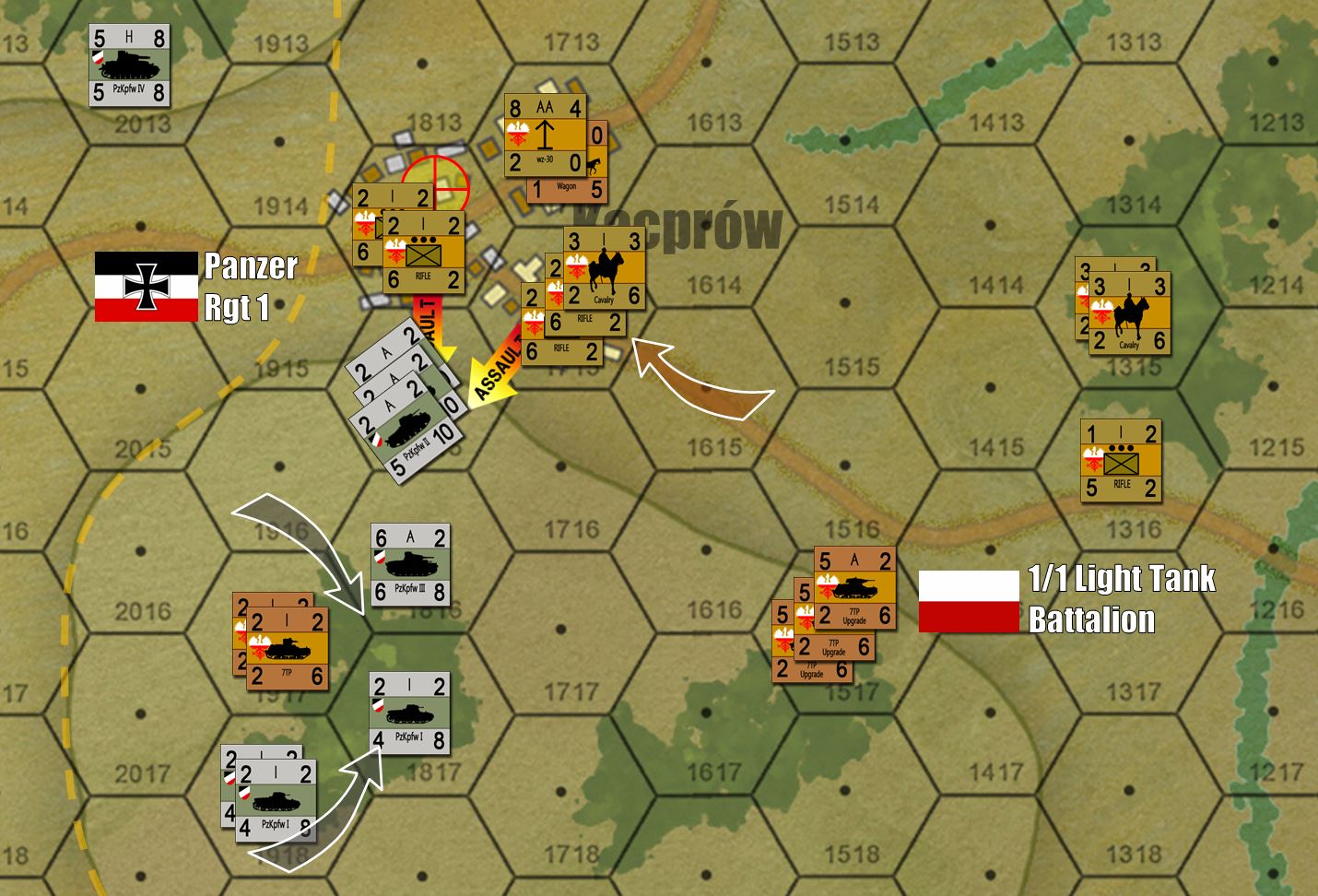
.
The German assault begins in earnest, with infantry guns, mortars, and 7.5cms on PzKpfw IVs (note that silhouette is drawn to resemble a PzKpfw IV Ausf. B, but the values are approximate enough to represent either A or B 1st Panzer was using for Fall Weiss). But Yavasa is feeding in reinforcements into the battle, and close-assaulting German PzKpfw IIs originally used to spot the Polish defenders. Yes, German tanks are burning, and Polish cavalry are involved. This DID happen (German armored recon if memory serves), and can be successful if done carefully under the right circumstances.
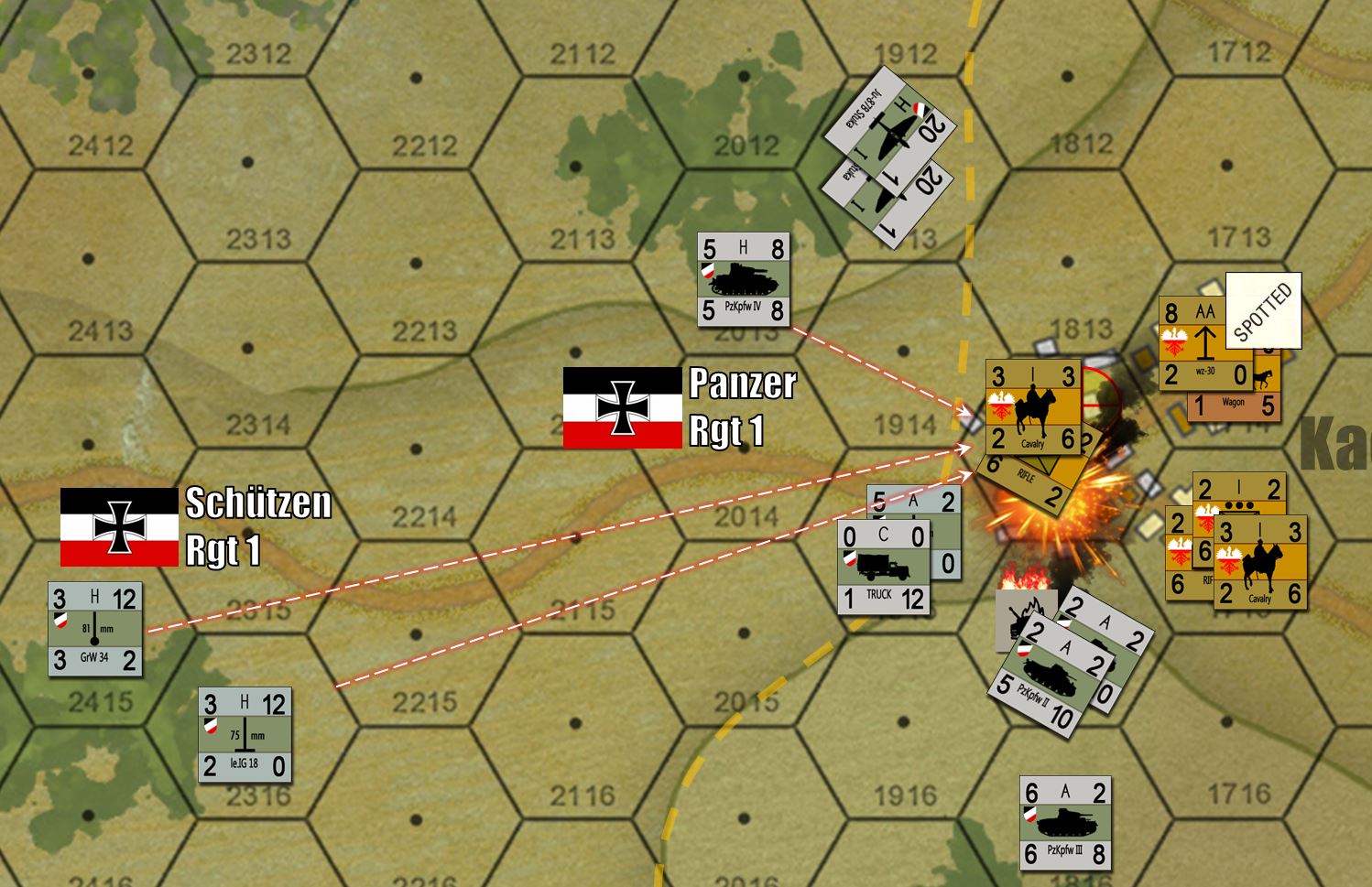
.
You can’t have a Poland 1939 campaign without some Stukas. Sadly for me (German player), Yavasa was using his light tanks pretty aggressively. Note these two platoons of tanks rolling toward by captured objective hex in Jezów. Hence, I was forced to use my limited Stukas to secure my flank and rear, rather than kicking in the front door toward more objective hexes further north.
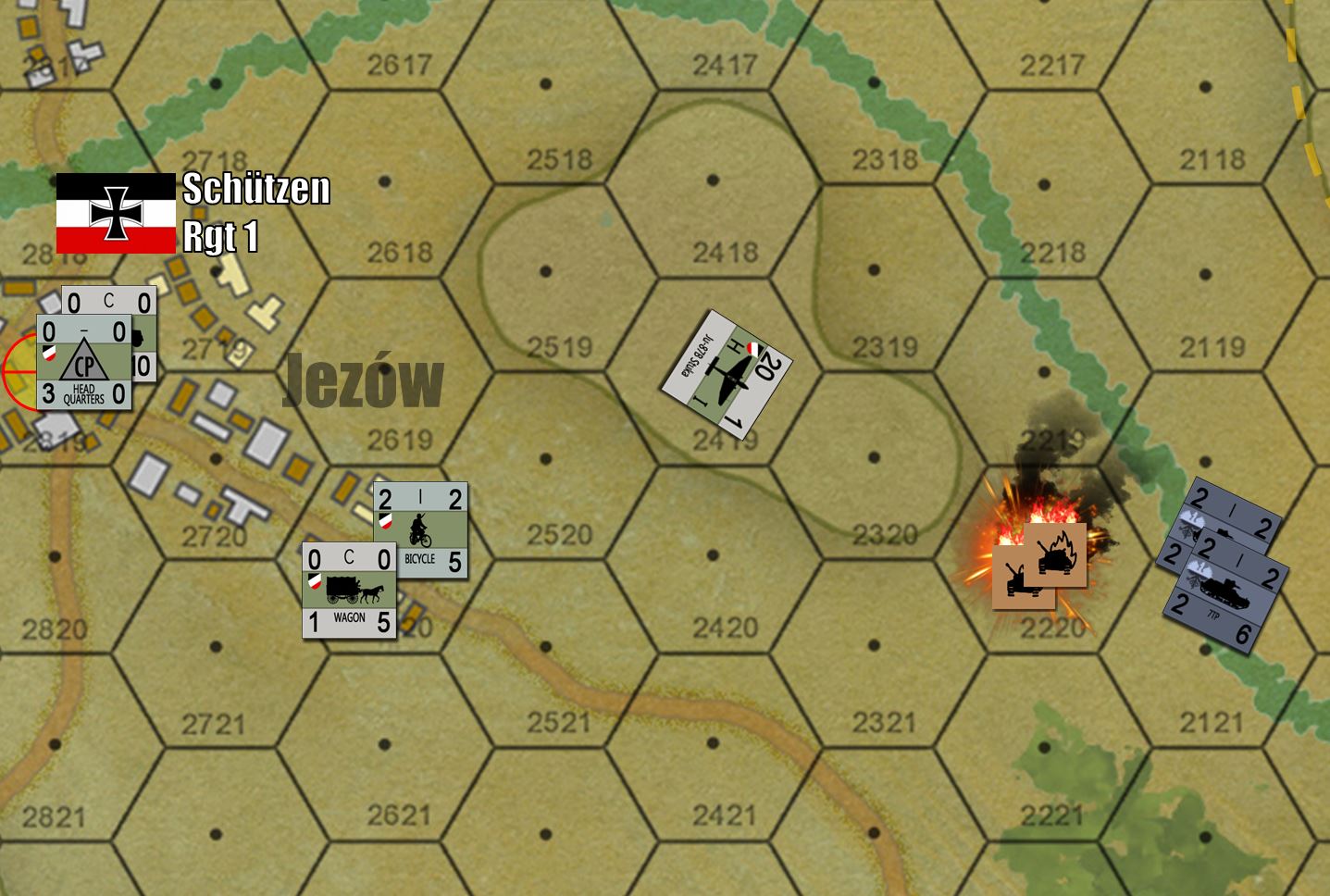
.
We got as far as Turn 5. Yavasa has definitely picked up this game! And I’m pretty sure if this game had gone to completion we’d wind up with a 4-3 Polish win.
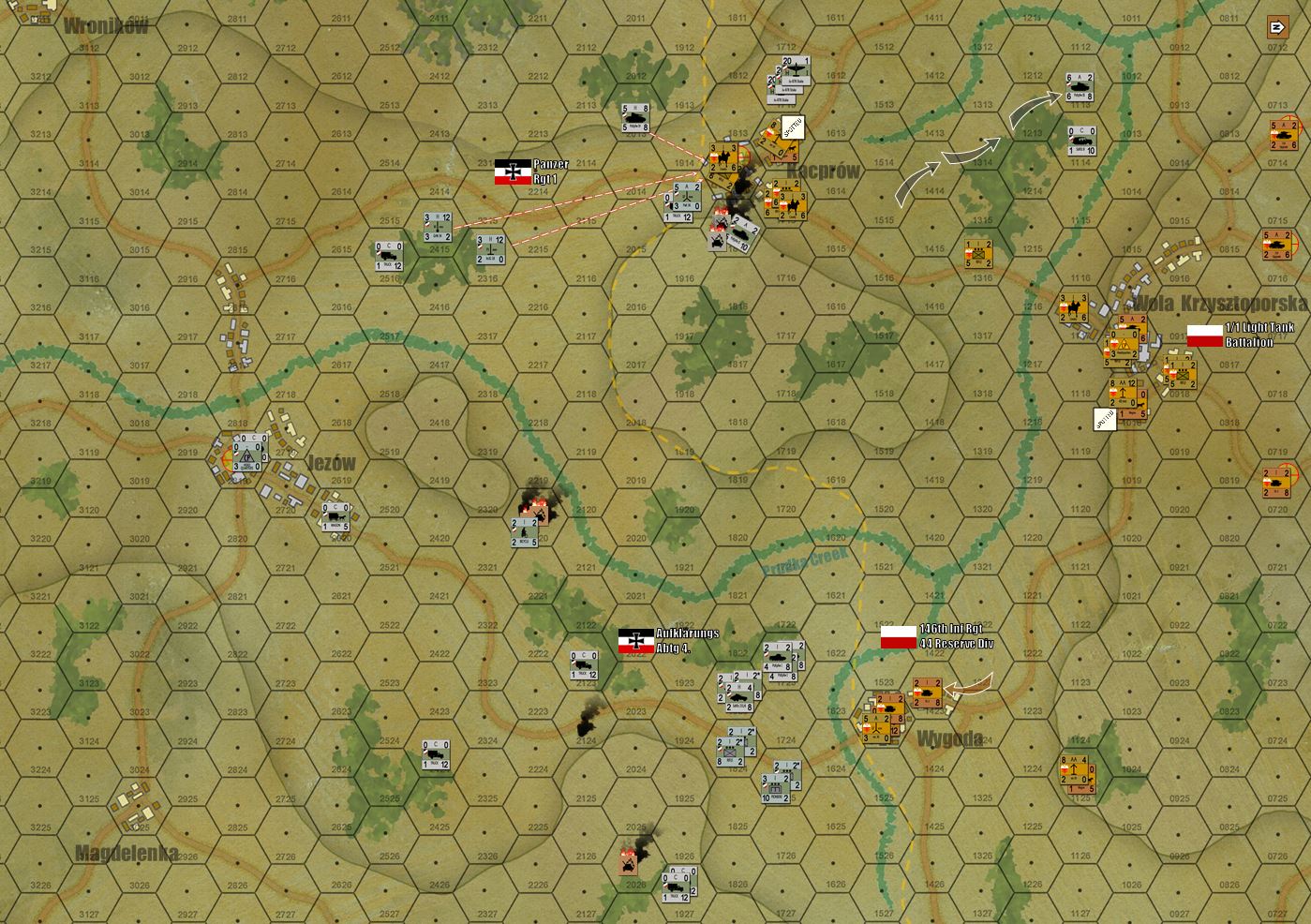
So we only got five turns through what’s normally a ten-turn game. No worries, this was just a demo game / tutorial. We hope to come back and do some more at a later time (schedules permitting) to continue our 80th Anniversary Commemoration of the 1939 campaign and the start of World War II.
August 14, 2019 at 9:08 am #1426133To continue with the historical background let’s look at one of the most significant provocations that was supposed to dishearten France and Great Britain from aiding Poland in the upcoming fight.
As stated in the previous posts Hitler wanted to isolate Poland. Thus the idea of false flag operations from which the so called Gleiwitz incident is the most notable one. The operation was really a covert one since there were no written records of it and it came to light during the Nurmeberg Trials.
To cut the long story short the Gestapo inspired operation was carried out by SS-Sturmbannführer Alfred Naujocks with a few of operatives dressed as civilians (a common misconception is that they were dressed in Polish uniforms). They “attacked” a radio station in Glewitz to send a statement that was supposed to convey that Poland does not want peace and that the radio station was taken by force by presumably Polish forces. However, what the Germans did not know that there were actually two building that were a part of the radio station and the one that they “took over” did not have the studio with microphones and all the necessary equipment. They found however, a mic that was used to warn people about upcoming storms. However, the operatives only managed to broadcast: “Attention! This is Gliwice. The radio station is in Polish hands…” and then the equipment refused to cooperate.
All this could be a nice scenario for a comedy if not for the actual victims:
- Franciszek Haniok, a former participant of Silensian Uprisings who sympathized with the Poles. Got arrested by the Gestapo on the 30th of August, got a lethal injection and then a few shot wounds. He was left on site in Gleiwitz to be a proof that the Poles were responsible for the attack on the German radio station.
- A few German camp prisoners from Dachau were also drugged and shot to be left on site in Polish uniforms. They were shown to international press representatives on the 1st of September as a proof for Polish involvement.
All in all the Gleiwitz incident was technically a big failure but still Hitler used it to as a propaganda tool with Radio Berlin broadcasting information about a Polish attack on Gleiwitz two hours later.
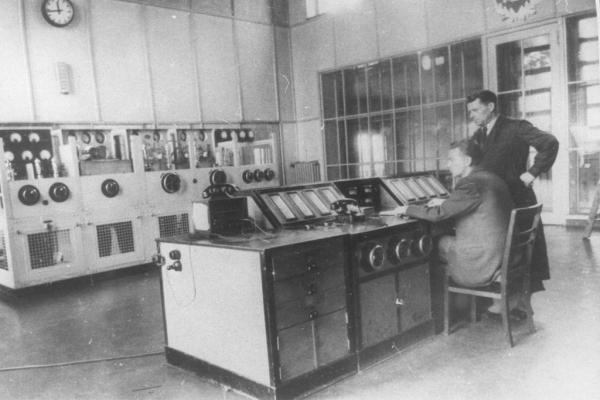 Place from which the message was sent by GermansAugust 14, 2019 at 9:15 am #1426140
Place from which the message was sent by GermansAugust 14, 2019 at 9:15 am #1426140Great read gents and a worthy topic, as many people (myself included until a few years ago) discounted the start of the war due to the historical focus being on blitzkrieg and not on the defiance of the polish people. Looking forward to this thread, thank you both for taking time to write it.
August 14, 2019 at 9:24 am #1426142August 14, 2019 at 3:29 pm #1426338Great effort guys, thanks.
A couple of minor additions from me:
As in the west we consider September 1st as first day of the War, more and more historians argue that considering global character of the conflict, first shots of 2nd World War ware actually fired in Japanese invasion of China a couple of years earlier. That is probably strictly academic polemic and does not have much real importance, but it is somewhat connected to September Campaign. I’ve recently read an article or listened to a podcast which argued that Stalin decided to act upon secret addendum to the Ribbentrop-Molotov pact (the one on war against Poland and partition of its territory, the main body of that legal document doesn’t mention that thing in the slightest), only after he resolved undeclared war against Japan in Manchuria. That conflict in the Far East ended on September 16Th and allowed Stalin to move west (BTW also without declaring war, which had its importance further down the road).
Couple more minor things to what you’ve written, and is probably worth adding, are that protection of native Germans outside German territory was never an end in itself but rather device used in political battle against Versailles treaty.
Also in March 1939 Poland took part in partition of Czechoslovakia by occupying part of contested Silesian territory. That affected cooperation of exiled governments of both countries during the war.
In September Poland was attacked from 4 direction on almost whole length of its borders, as even Slovakian armies (Slovakia was at the time a puppet state of 3rd Reich) crossed the border and engaged Polish units.
Regarding Gliwitz incident – maybe you can confirm or deny but I remember reading somewhere that the operation was carried out with cooperation from the infamous Brandenburg Unit, an irregular troop consisting of Germans from border areas. The same unit was then involved in disorganization and obstruction of Polish retreat and then in attack on Belgium and Netherlands.
And one last thing, you may want to read a book by by Lynne Olson and Stanley Cloud titled “A Question of Honor”. The book covers exploits of Polish pilots during whole war but first chapters cover pre-war situation in Polish air force as well as airborne engagements in September itself which aren’t widely known.
August 14, 2019 at 3:44 pm #1426340Hello @shingen thanks for the great reply.
Indeed what you write ia true. Poland did occupy a part of Czechoslovakia and it did affect the latter cooperation while in exile. Sad, but true.
Indeed Poland was attacked from all sides, including Slovakia.
As for the Gleiwitz incident I cannot confirm that the people involved were part of the Brandenburg Unit, they were SS for sure. After the whole incident they calmly returned to a nearby hotel.
On a side note I try to write these historical posts with as little amount of details as possible but at the same to provide an overview of the situation. Thankfully it is a forum so we can delve into details in discussions 🙂 also thank younfor the book recommendation.
I will leave the part of the earlier beginning of the war to @oriskany I’ve heard about it and agree partially with the assumption.
August 14, 2019 at 9:48 pm #1426429
It’s great to see this thread taking root like this. Thanks for all the input and support.
Okay, the question on the table is, how do we interpret China’s involvement in World War II vis-a-vis Japan, and what bearing does this have on when World War II actually starts?
Well, not to get too pedantic here, but if we scroll back to the top of the thread, we’ll see that I carefully wrote around this issue:
… with some commemorative publications and wargames centered on the official opening of the conflict, Germany’s invasion of Poland in 1939.
“Official” obviously being the operative word here.
Yes, I knew this issue lay out there, like a land mine waiting to go off. In some way I may have helped plant the mine as it’s a position I have advocated and defended in the past. Put another way, @shingen has a very valid point.
The Question:
Pick up any history book, open any serious history website, ask most historians, and they’ll all tell you the same thing. World War II begins with Germany’s invasion of Poland in 1939. But is it true?
Not necessarily. That said, this is a point I try not to drive home too hard in the community because believe it or not, it brings up a surprising amount of baggage.
The Case:
Japan invades China in 1937 in a big, big way. This opens up a huge front of the war, with never falls below millions of people engaged and very quickly racks up fatalities in seven digits. It hasn’t ended when 1939 rolls around It hasn’t ended when 1941 rolls around Japan attacks the US, the UK, French colonies, Australia, the Dutch, and a host of other nations that “officially” starts World War II in Asia and the Pacific. There are huge battles, campaigns, counterattacks, atrocities that would make Josef Mengele ashamed, experiments with chemical and biological warfare, you name it.
It’s a war.
But is it part of World War II?
Legally, yes. And I use “legally” on purpose.
World War II doesn’t end with Hitler’s death or the fall of the Third Reich. It ends “officially” on the deck of the battleship USS Missouri, where the government of Japan surrenders to government representatives of all the Allied powers. This instrument of surrender is an international treaty, which by definition is international law. And that law isn’t official until everyone signs it … the Americans, the British, the Australians
- Fleet Admiral Chester Nimitz for the United States
- Admiral Sir Bruce Fraser for the United Kingdom
- Lieutenant General Kuzma Derevyanko for the Soviet Union
- General Sir Thomas Blamey for Australia
- Colonel Lawrence Moore Cosgrave for Canada
- Général de Corps d’Armée Philippe Leclerc de Hauteclocque for France
- Lieutenant Admiral C. E. L. Helfrich for the Netherlands
- Air Vice-Marshal Leonard M. Isitt for New Zealand
and yes…
- General Hsu Yung-Chang for China.
China has to sign the document before the war legally ends, which means her participation in the war is legally recognized as an official sovereign combatant. Ergo, her entry into the war has to be taken into account when determining when the war starts.
World War II is not just about Europe. It didn’t start in Europe. It didn’t end in Europe. It wasn’t about Europe. It was about the world, of which Europe has not been the center for some time.
The Complications:
A surprising number of people get agitated when this is brought up. There are a list of reasons for this.
1) People in Britain sometimes find this uncomfortable because it challenges the idea that they were “in the war the whole time,” and refutes the idea that they were ready to fight against right-wing dictatorships from the very outset.
2) British History as an Institution: The eurocentric idea that emphasizes the contributions of the UK, US, Canada, France … in short, the West … at the expense of the Soviet Union or China (who actually suffered well over 90% of the Allied fatalities of World War II no matter how creative you get with the numbers) was largely established i the late 40s and early 50s as the first wave of Second World War history was written. This was almost exclusively done by British academics, with Winston Churchill himself leading the way. It’s not wrong, just incomplete.
3) People in Poland may feel like they’re losing their status as “first to fight.”
4) Europeans in general realize the war wasn’t “just about them.”
5) People in Japan are confronted with a truly horrific chapter in their nation’s history.
6) In addition to the Soviet Union, people in the West must now accept that the “other great ally” also turned out to be a colossal Communist adversary in the Cold War, leading to nihilistic underpinnings of what World War II was even about or if anyone even “won” the war. “The Greatest Generation” defeated right-wing fascism, national socialism, and militarism only to set up left-wing Stalinism, Maoism, and God-knows what else? Was there really anything so “Great” about that?
7) Bringing in China in 1937 begs the question of Manchuria in 1931. I do not propose moving the date back that far. Manchuria was another conflict that doesn not draw an unbroken line of sight with China 1937 … but it complicates the waters nevertheless.
8) Including 1937 as a start date greatly complicates geopolitics in Asia. Remember that the Soviet Union and Japan fought two major conflicts in Mongolia, 1938 and 39. Once we get the Molotov-Ribbontrop Pact of 1939 (making Hitler’s German and Stalin’s Soviet Union “allies”), does this make Japan an enemy of Germany? Does this make Japan an Allied power? Of course not, it just complicates the hell out of the situation. And when looking at history, people tend to like simplicity, what can easily fit on the back of a miniatures box, in a 90 minute action movie, a video game, or a YouTube video.
9) Who really wants to re-write every history book ever written on World War II?
The Conclusion:
Of course, I’m not trying to propose what’s right or wrong here, or tell virtually everyone in the world that they are “wrong.” I’m just making a case and outlining some reasons many people resist it.
The war against Nazi Germany, one of the worst evils ever faced by Humanity, begins here in Poland on September 1, 1939. Even the British wouldn’t declare war on Germany for two more days. And America never declared war on Germany. German declared war on the US after we declared war on Japan. And of course Poland would continue to fight after the fall of their state, with massive armies in exile fighting in both the East and West, to say nothing of the home army and the Resistance.
More on Poland 1939 later, I promise … 😀
August 15, 2019 at 12:37 am #1426446Good to see you have placed the spotlight on Poland @oriskany. I feel it is an all too often overlooked campaign of WW2 by wargamers in general. I have never played it with miniatures but have done so on hex and counter and PC hex games. I know the German players in our group are not interested as it does not involve big cats. The German tanks are at their lowest armour thickness and fire power but in is period a 37mm AT gun rules the battlefield like an 88mm. So for me everything is still in proportion.
What I have taken away from my gaming is that it is very much a war off movement and if the German player takes his eye off the ball he will lose. You can too easily do this as you get carried away destroying Polish formations. It is not straight forward either as gamers prefer to use and deal with armoured units yet Polish infantry are a match for German infantry and any such encounter can go either way. The much put down Polish tankettes get their last but outnumbered Harrah here. It can take out PZ-1s, which was one of the more common tanks in this campaign. It can also take down a careless PZ-2, but from a T-26 or above it is just totally out classed. I think that the MG version is more dangerous as these tankettes are fast and can pounce upon infantry and gun unit before you can blink and by the time you have dealt with them the damage has already been done. Their larger tanks are copies of the Vickers 6 ton tank and again for this briefest of moments they are still a good tank. It is the large deployment of AT rifles and a profusion of 37mm AT guns that is their undoing. One battle I would like to do is one were you get to take on the forward elements of a panzer division with an armoured train and infantry units. It was a very narrow win for the Germans that cost them time so I call it a draw. I don’t remember the name of the battle at the moment and I am too lazy to go and look it up.
I have not seen a documentary on the Polish Campaign that I like as they also have to show the German propaganda mock battle between tanks and cavalry and they bang on about how futile and one sided it was, which is just not so. It was more about the different strategies employed by both sides. The Germans go for a near standard Prussian war of development with some blitzkrieg brass knobs and the Polish go for a thin line trying to protect every km of their boarders. I would actually still put Polish cavalry up against the panzer division. Their are elite infantry but have the largest amount of modern light towed AT guns.
The start date for WW2 has been raised. As the main topic of thing s series is about Poland I feel September 1st is appropriate. For the US and Russia it is 1941, the most Europeans it is 1939 and to others it is the mid 30s and if you consider the Italian campaigns in Africa it started much earlier. So it must be a sliding scale otherwise it is like trying to pick when a bush fire became a fire storm. For me I see it as a continuation of WW1 as no real issue was solved and a lot more was created. Just like a bush fire it starts with tiny spot fires that combine to make bush fires that in turn combine into a fire storm. A world war its the fire storm and there has been more than two of them just that the last two were numbered when they named them.
I have not been on line much as I have been very busy of late. I am building some new armies, working on our Izyum project and working on the hex system table. If that was not enough I bought a copy of the Rommel rules and are going through them at the moment. These rules was the one used by the Little Wars guys to do their all of D- Day on a 12′ foot table. It sits high in the operational warfare sphere as a stand of men or a tank is generally represents a company. 6 inches is 1 km on the table, but we will rebuild it so that 4 inches is 1 km ship that it works better with our hex system table. So far it looks like a prime candidate for our higher level gaming. FoW remains our primary rule set with BG being the primary set when we zoom in at individual level prospective. The Rommel rules look at the issues at the higher level such as units being in combat formation or have become dispersed and or supplied and allows the battle to be fought over a number of days. We will be using 15mm models to represent the armies while the terrain features will be made tiny. This will allow us to test and use this system very cheaply. 🙂
August 15, 2019 at 2:33 pm #1426575@oriskany , nice breakdown here, and interesting points on the British historical emphasis : I have experienced when doing my open university degree in the 1990’s
I know when one of my degree coursed modules, :War peace and social change 1914 to 195o they broke down WW2 to various separate wars, 1939-1941 European war etc. (So if you do that China would count,) but for most of us the official date is the one most know (if they know a date at all)
Not sure I agreed with it, but then I wasn’t popular as I was a military historian and not a social one, it was frightening that these were lecturers and how much of the actual military history they got wrong. Plus I agreed a lot with AJP Taylor interpretations on war origins, and he was currently out of vogue.
August 15, 2019 at 7:23 pm #1426733
Good to hear from you, although I should say up front this thread is a join collaboration between myself and @yavasa . He actually knows some of these battlefields much better than I do, which is only natural as he practically lives on them. 😀
I would agree this campaign is often overlooked. I feel many wargamers think it is one-sided.
In a strategic sense, sure. Britain was in no position to help and France’s invasion of Germany was symbolic at best. The Soviets were coming in from the east starting on September 17. Even the Germans had the option to attack from three sides from territories in Czechoslovakia.
On an operational level, sure. German divisions, corps, and armies were far more mobile, striking into voids, against a relatively immobile Polish army whose rail and communication network had been largely paralyzed by the Luftwaffe.
On a tactical sense … eh … things get a lot more dicey, IF you look for the right engagements. The Poles kicked in plenty of German teeth and even won some local victories here and there. German losses would amount to something like 15,000+ KIA, x2 wounded. Doesn’t sound like a walkover to me.
The German tanks are at their lowest armour thickness and fire power but in is period a 37mm AT gun rules the battlefield like an 88mm. So for me everything is still in proportion. Yes, this is what we demonstrated in our live game, and in the project thread. Note the attack factors and especially the ranges on these PzKpfw IIIDs (just an example) and 7TP upgrades. Compared against DFs, we wind up with the same 0.7-1.0 ratio ranges as we’d see in 1944 with PaK 43s trying to put holes in KV-1s, T-34/85s, Churchills, and IS-2s.
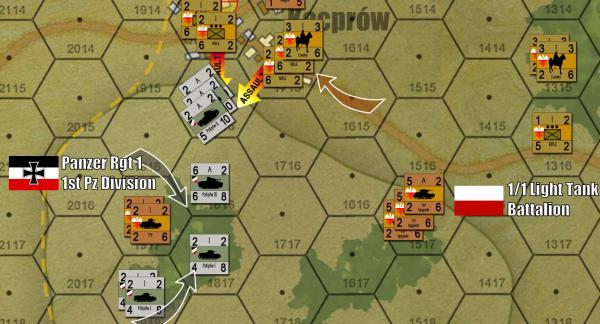
The real difference, and I think here is where the comparison breaks down a little, is in the ranges. Sure, 1939 guns vs 1939 armor, that Ek=1/2mv^2 delta is going to be roughly the same as 1944 gun vs, 1944 armor. What’s not the same is range, which is the real change in battlefield “geometry” and thus tactics. Movement is king in early war games. In late war games it’s firepower. One more reason I vastly prefer early war. 😀
Yet Polish infantry are a match for German infantry and any such encounter can go either way. I would only add just a couple factors here… the MG-34, the Grenatenwerfer 34, and the fact that half of Polish infantry units were still only partially mobilized. There are definitely tiers here, as we saw in last weeks game with a mix of 1st Polish Legion troops and 146th Reserve Regiment / 44th Reserve Division. The German infantry battalions also had much better infantry gun support, with every battalion having at least a battery of le.IG 18s.
I think that the MG version is more dangerous as these tankettes are fast and can pounce upon infantry and gun unit … Only if they are still mounted in trucks, as I learned to my cost last week. 😀

The start date for WW2 has been raised. As the main topic of thing s series is about Poland I feel September 1st is appropriate. For this thread, I agree.
We’re just getting started here. I wouldn’t mind taking another swing at the Battle of Borowa Góra, maybe doing it right this time (this is critical as it’s probably the biggest Polish tank force engaged, at least of the improved 7TPs). Strategy & Tactics: World at War has a whole article on the Battle of Tomaszów Lubelski, material that will come in very helpful if we take a swing at that one. I think @yavasa mentioned the Battle of Westerplatte. Tons to go over in a very short amount of time.
Thanks for checking in, @bobcockayne – I would agree that A J P Taylor is always a little controversial, with some people who don’t really understand his work even labeling him as some kind of Third Reich apologist, particularly in regards to his The Origins of the Second World War. I would certainly never say that, but I don’t know if I agree with him 100% on Germany not wanting a major war. I feel Hitler and his government absolutely wanted war, just not in 1939. World War II erupted at least five years earlier than planned (at least with major powers like France, the UK, and later the Soviet Union), perhaps more depending on who you read. But of course I’m oversimplifying here.
August 15, 2019 at 7:48 pm #1426749Hello @jamesevans140
I have not seen a documentary on the Polish Campaign that I like as they also have to show the German propaganda mock battle between tanks and cavalry and they bang on about how futile and one sided it was, which is just not so.
Must agree and emphasize that Polish cavalry did not commence a charge on German tanks that would be an outcome of a direct order. It was a myth constructed by the Nazi propaganda and later on continued by communist one. It was mostly made up by German and Italian war correspondents. Often the battle of Mokra and Krojanty are given as examples. At Krojanty the 18th Pomeranian Uhlan Regiment did charge German infantry and while doing so got attacked by German armored halftracks and so decided to withdraw rather than engage these vehicles. Next day corespondents got assured by the Germans that Polish uhlans died while attacking tanks. At Mokra where the Wołyńska Cavalry Brigade fought with a lot of success against German 4th Panzer Division, German tanks so suddenly popped out of smoke that was really restraining visibility and attacked the uhlans. Again Polish cavalry did not charge those tanks. At Mokra the Germans lost 40 tanks with probably twice as more damaged.
Cavalry tactics in 1939 was to use the horses for transport and maneuvering. They were fighting on foot and using anti tank guns and rifles to fight tanks and vehicles. What is more cavalry was to be used only as a defensive force against tanks.
August 15, 2019 at 7:58 pm #1426750
Shows what I know … no sooner do I say that I believe the Battle of Borowa Góra to be the largest concentration of Polish armor, especially 7TP upgrades … than I find to the contrary with the Battle of Tomaszów Lubelski, which sees not only a bigger Polish tank force, but also in the attack against flanking positions of the German 4th Light Division.
No worries, as this was a battle I wanted to look at anyway in the coming weeks.
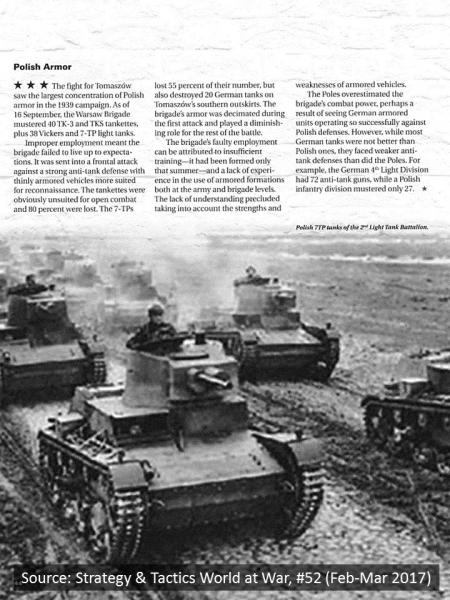
-
AuthorPosts
You must be logged in to reply to this topic.































